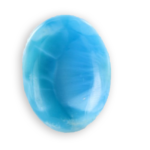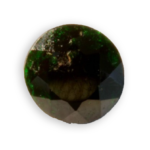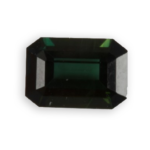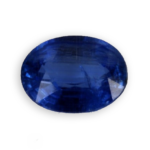
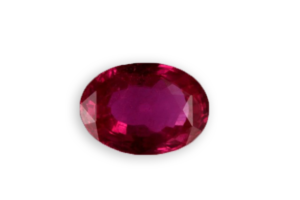
ruby
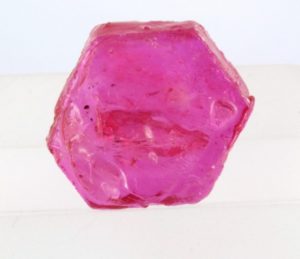
ruby crystal – “glass-filled” – treated
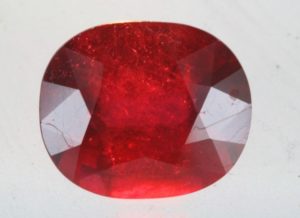
ruby crystal – “glass-filled” – treated
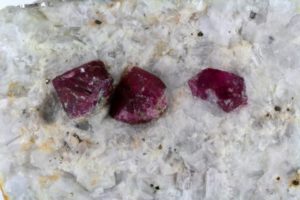
ruby crystals in marble from the Hunza Valley in Pakistan
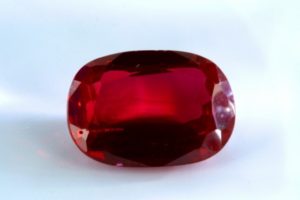
ruby cut in corundum, Verneuil synthetic process
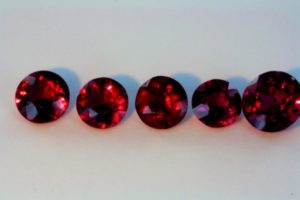
rubies from Africa
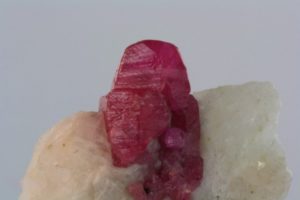
ruby crystal from the Emir mine in Afghanistan
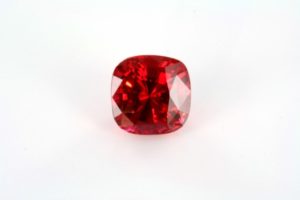
ruby from Mozambique cushion cut
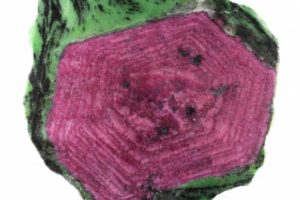
ruby crystal in a zoisite gangue

solid like inclusions, rutile and apatite needles
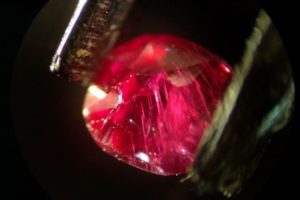
solid like inclusion, bohemite tubes
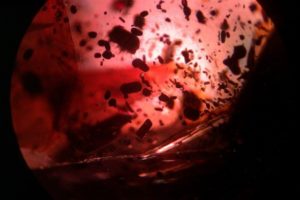
solid like inclusions : apatite crystals
Detailed sheet
ruby
Its name comes from the Latin “rubeus” or “ruber” meaning red.
Ruby is the name of the true red variety of a mineral, Corundum, which itself can be of all the other colors under the name of sapphire, except for the red which is reserved exclusively to ruby. All the samples of corundum do not possess the qualifications of transparency and color required to be considered gems. It was long known as “carbuncle”, confused with red spinel and pyrope garnet. It was not until 1800 that is was attached, with sapphire, to the corundum group.
Blood red colored, with a hint of blue, with notables shades, one of them, known as “pigeon blood” , is the most popular. It varies in the same deposit, which rules out the possibility of establishing the origin of a gem based on this.
Some names, such as ruby or Siam, or rubies from Burma only distinguish the color, not the intrinsic quality .
It often contains inclusions (minerals, fluids …) that do not matter on the quality of the gem, but rather, they guarantee its authenticity faced with synthetic stones. If they are rutile, the ruby takes a silky appearance when it is cut in cabochon, these tiny rutile needles cause the asterism or the cat-eye depending on the orientation of the cut.
The presence of chromium modifies the color which is divided into strips, or rafters, where iron brings a brown shade, which is not appreciated.
Speaking of Ruby, it’s speaking about Burma, where the most beautiful rubies in the world were extracted and still are, for which the Indian Maharajas and Princes got passionate.
A new deposit in northeast of Mozambique (Montepues) produces high-quality rubies.
The ruby, and corundum, are the hardest stones after diamond. Corundum is the standard No. 9 on the Mohs scale of hardness, which ranges from 1 to 10 and in which the diamond is “10”.

CHEMICAL CHARACTERISTICS
Al2O3
aluminium oxide

PHYSICAL CHARACTERISTICS
Main color
red
due to chromium, the most sought shade is the pigeon red blood
Color of streak
white
Luster
adamantine, vitreous
Hardness
9.0 to 0.0
Density
3.97 to 4.05
Cleavage
none
Fracture
conchoidal, uneven

OPTICAL PROPERTIES
Transparency
transparent
there are also translucent, stony
Refractive index
1.762 - 1.778
Double refraction
0.008
very weak, uniaxial (-)
visible double refraction
No
Dispersion
0.018(0.011)
Pleochroism
strong
Number of colors
2
red, orange
Absorption spectrum
694 - 693 - 476 - 475 - 468

Burma rubies spectrum system

pink ruby spectrum system

Burma rubies spectrum system
Fluorescence
variable
red, depends on the chromium content
Inclusions
they are common: solid or liquid. Rutile causes the asterism in many gems

CRYSTALS PROPERTIES
prisms and tabular pseudo-hexagonal crystals. Ruby trapiche in wheel
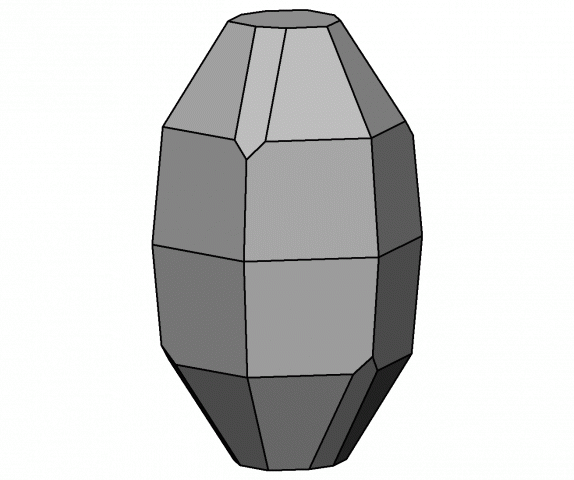
crystals system
trigonal

OTHER INFORMATIONS
Astrological sign
Aquarius, Cancer, Scorpio
Month
july
Chinese astrological sign
Pig

APPROACHING GEMS
Exploited
sites
It is found in rocks in so small proportions that its exploitation is rarely cost-effective and it is preferred to “pick” it in the alluvium. Crafty methods of production, have not changed for centuries.
It is exploited in Burma at Mogok, since the fifteenth century. It’s always in the north of the former Burma (now Myanmar) that the main production centers are found. Rubies, crystallized there about 60 million years, carried by rivers, are swept up in alluvial deposits which are being depleted at the surface and are extracted from wells. Washed by jets of pressurized water, the muddy water is then pumped and dumped into a large sieve for sorting. There are also galleries of mines up to 2.5 km long. Blocks of white marble containing the gems are brought out and broken by trustful men.
Let us add the gravel clay area of Chanthaburi, southeast of Bangkok (Thailand), where wells from 8 to 10 meters deep produce brownish or purple colored stones, or the gravel rivers in the region of Ratnapura, in the southwest of the island of Sri Lanka, whose stones are light red to raspberry red, and also the upper Umba river, in Tanzania, which delivers red brown rubies.
Other deposits also exist in Afghanistan, India (Mysore, medium quality, color purple), Nepal, Pakistan (very clear ), Cambodia, Vietnam (provinces of Yen Bai and Nghe), Brazil (Bara Ingefinho), United States (Montana, North Carolina), Kenya (Mangari region), Madagascar, Malawi (region of Chimwadzulu), Zimbabwe, in the region of Prilep (Macedonia), Switzerland (Ticino), Norway, Greenland, Australia (Queensland, new South Wales).
The new deposit of Montepues in Mozambique produces since very little time, rubies of a beautiful color.
use in jewelry
Ruby is one of the most sought after gems and of the highest value in jewelry. Especially since the stones over 10 carats are rare. It was in India, during the Mughal period, that these princes have acquired most of the finest rubies from Burma, that they even embedded in dagger handles and with whom they covered their thrones. This is the most prestigious gem, that some even prefer to the diamond, all the major jewelers have made creations with rubies for the “Great of the World”.
The finest rubies are those coming from Mogok in Burma, the valley of rubies, especially those known as “pigeon blood”, that are famous worldwide. They have a shade of blue in their red, which makes them exceptional and very typical, a nuance that is also found in rubies from East Africa or even from the Hunza Valley in Pakistan, near Kashmir, and from Sri Lanka.
Rubies from Thailand have a shade of purplish color, as those from India who are of a lower quality. The cut of rubies on the production site is unsatisfactory, because we want to keep the weight up for sale, and they must be trimmed later. Depending on the shape, purity, color distribution, the faceted polishing is retained for transparent stones, the translucent ones are cut cabochon or shaped up in balls for necklaces, larger and poorer quality ones are being carved in art objects, trinkets, charms. The star rubies of good color are also in demand. The translucent pink sapphires, cut into cabochons, coming from Macedonia are marketed under the name of Macedonian rubies.
Ruby is the stone of the 15th anniversary year of marriage and also on the 35th.
Daily care
and precautions
This is one of the gems easier to maintain because it’s shock resistant, with a high hardness and impervious to acids and heat. Washing up with water and dish soap and rinse with alcohol.
imitations and
treatments
It is glass, a quartz, heated and then suddenly cooled in a red dye (rubasse), some doublets made with a table of garnet and a glass culet, or a table of natural sapphire and a culet of synthetic ruby . Some are heat treated. Others have their open fissures filled with glass or resin, in order to be consolidated and of a better appearance, the “glass filling”technique, considerably “improved” in recent years: the cracks of the stone are hot-filled with a lead glass colored red and of the same refractive index as the ruby, then the stone is cut. Since 1960, synthetic anhydrous rubies were made, the residues of which, determine the source of manufacture of artificial stone. Hydrothermal processes exist, but low marketed today. The fraudulent trade names are prohibited, such as “adelaide ruby” (a pyrope), “ alabanda ruby “ (garnet or red violet spinel), ” broom ruby ” (red spinel), “cape ruby” (pyrope), ” ural ruby ” (red tourmaline) …
Starting from the early twentieth century, high quality synthetic rubies, have been used, (Verneuil process), whose properties are identical to those of the natural stones.
Since 1950, we know how to produce synthetic starred rubies by changing the Verneuil process a little, but the star is too bounded, seeming to run beneath the surface of the cabochon, without radiating from the center of the stone, each of its interwoven branches being twisted like a coil instead of showing brilliant needles perpendicular to each branch. We recall that the heating of the ruby makes it more red, often multiplying its value by 5 or 10.
improvements
It is recognized that a moderate heating, observing the crystal structure of ruby can be done to beautify the gem, to complete the work of nature by enhancing its color. In any case material it is added for filling cracks, nor colorings. This type of treatment is called “improvement” by professionals and should be mentioned during the sale.
Historical
healing properties
Ruby is considered a symbol of charity, loyalty and its vibrations would contain the primordial force harmonizing various aspects of divine love and of love in an accentuated and purified form, but also the courage, boldness, giving strength and courage to the timid and the weak … because of his color, that of burning fire, it stimulates the feelings. It would bring joy and peace, leading to pleasant dreams, sending sadness away. It would bring to realism the too idealistic dreamers, helping them to perceive, understand and accept the challenges of material life and everyday problems related to the cultural, financial and emotional sphere …
This materialistic stone would apply especially on the base chakra, which means that it is not recommended for people who are authoritarian, angry, and can be dangerous for people of a sanguine temperament, or to the ambitious madmen, of whom it would exaggerate the inclinations. It is also a power stone that all the Great people of this World wanted to acquire, a command stone, that the chief warriors wore for battle, the red symbolizing hot temper. It would facilitate memory, would strengthen the genitals. By touching the four corners of a house, of a field, an orchard, a vineyard … with rubies, they would protect them from lightning, storm, parasites.
To Leo, it would allow access to all the fullness of his power to love, raising his primary sexuality towards the love of the heart, the source of universal love. It would be the same for Scorpio in which he will transform his strong emotional impulses in a complete and unconditional love, purifying his sexual desire.
To Aries, it would promote its evolution on all levels by making its energies more subtle, strengthening his intuition and creativity, helping to discover the spiritual aspects of sexuality. It fills him with a pleasant warmth.
historical stones
and related legends
Being large rubies rarer than diamonds of equal size, their cost is therefore very high and some became famous. The largest ever found, in 1961 weighed 3,421 carats, it was broken to cut, the largest fragment weighing 750 carats yet. The ruby Edward ” Edwards’ Ruby “of the British Museum in London (167 cts), the Roser Reeves star ruby, oval (138.7 carats), from Sri Lanka, kept at the Smithsonian Institution in Washington (USA), the star ruby De Long (100 carats), from the former Burma, the Peace ruby (43 carats), so named because found in 1919. A sculpture was carved by the american Harry Derian in a ruby from Mozambique of about 3000 carats.
Many crowns of emperors, kings and princes wear jewels, like the Bohemian crown with a non faceted stone of approximately 250 carats. in contrast, the “black prince’s ruby”, set in the crown of England, proved to be a spinel, such as the “Timur ruby” inserted into a collar of the treasure of the British crown, or again the spinels of the crown of Wittelsbach (1830), long claimed to be a ruby , or that of the “Coast of Brittany” in the Louvre museum in Paris
Texts from southern India today’s Sri Lanka, contemporary to the Ramayana, assimilate the origin of ruby with drops of blood. According to another legend, the Mogok valley was infested with snakes that swarmed the ground and their fatal bite banned from collecting the rubies. Pieces of meat were thrown with catapults.
The rubies congregated there and they were carried outside the valley to birds of prey that, once filled, let the men access to their nests to retrieve the gems in their droppings.
Venez visitez
notre site web
voillot-joaillier.fr
Lorem ipsum dolor sit amet, consectetur adipiscing elit. Ut elit tellus, luctus nec ullamcorper mattis, pulvinar dapibus leo.Lorem ipsum dolor sit amet, consectetur adipiscing elit. Ut elit tellus, luctus nec ullamcorper mattis, pulvinar dapibus leo consectetur adipiscing elit. Ut elit tellus, luctus nec.

